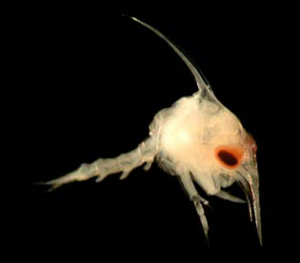cat(‘Hello, world!\n’)
I’m Iris, and I used to blog over at From Alevin to Adult. An alevin is a newly-hatched salmon and, as you might guess, my current research is fairly salmon-centric. I’m studying factors that influence estuarine and early marine growth of salmon, and how growth links to overall survival.
Salmon are anadromous, meaning that they move between freshwater and saltwater at different stages of their lifecycle and, as such, they depend on a variety of habitats. Furthermore, salmon are often subject to intense size-selective mortality – meaning that a fish’s growth can determine whether or not it survives. Several studies have shown that the time spent and size gained in estuarine and early marine environments affect overall survival for salmon. Growth is largely determined by feeding success, and faster early marine growth has been associated with higher marine survival for salmon.
So, what could influence salmon feeding in these early life stages? Surely what they’re eating might play a role – where is their food, and how much food is there?

Environmental stressors may affect feeding. High temperature and low-oxygen waters can be inhospitable to salmon. This can physiologically affect the fish so that it does not get as much net energy from its prey, or it can prevent the fish from reaching its prey altogether.
Read More “Inaugural post: issues facing Puget Sound Chinook salmon” »